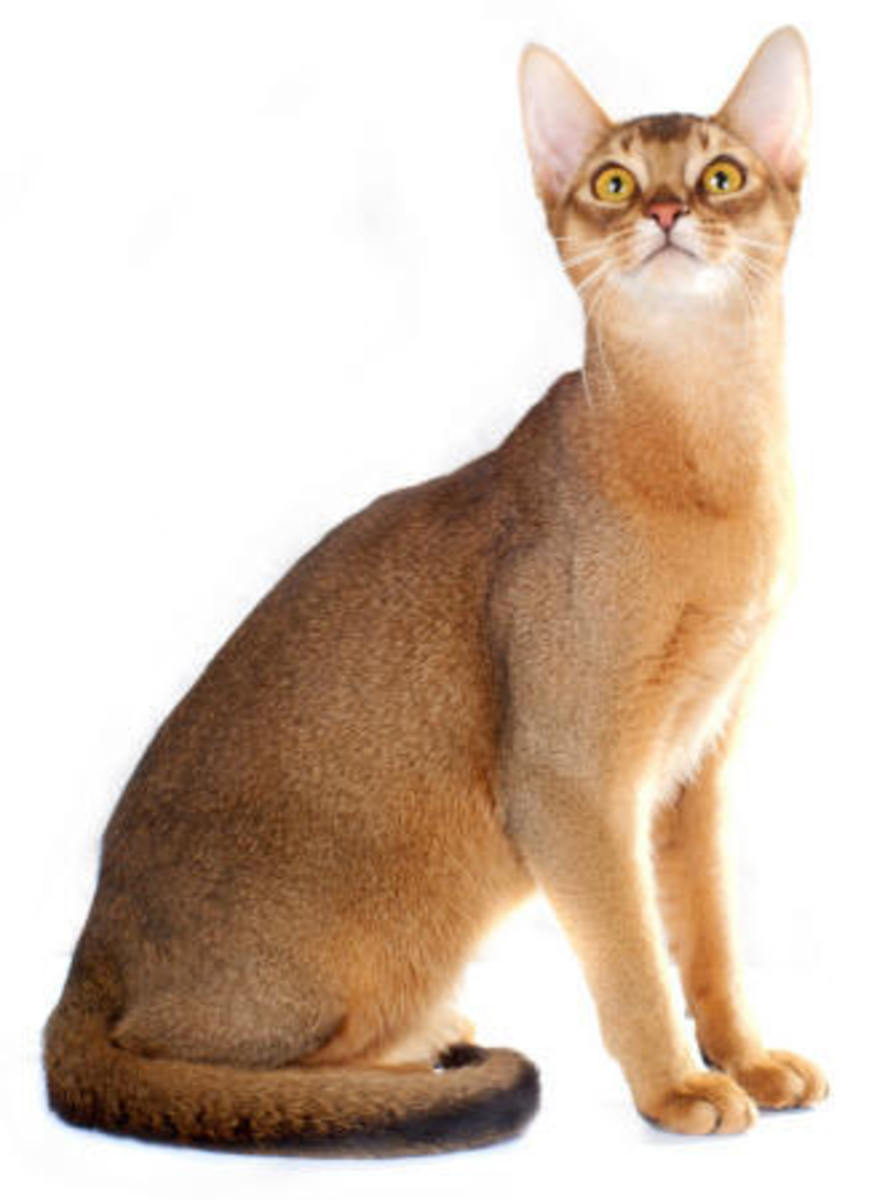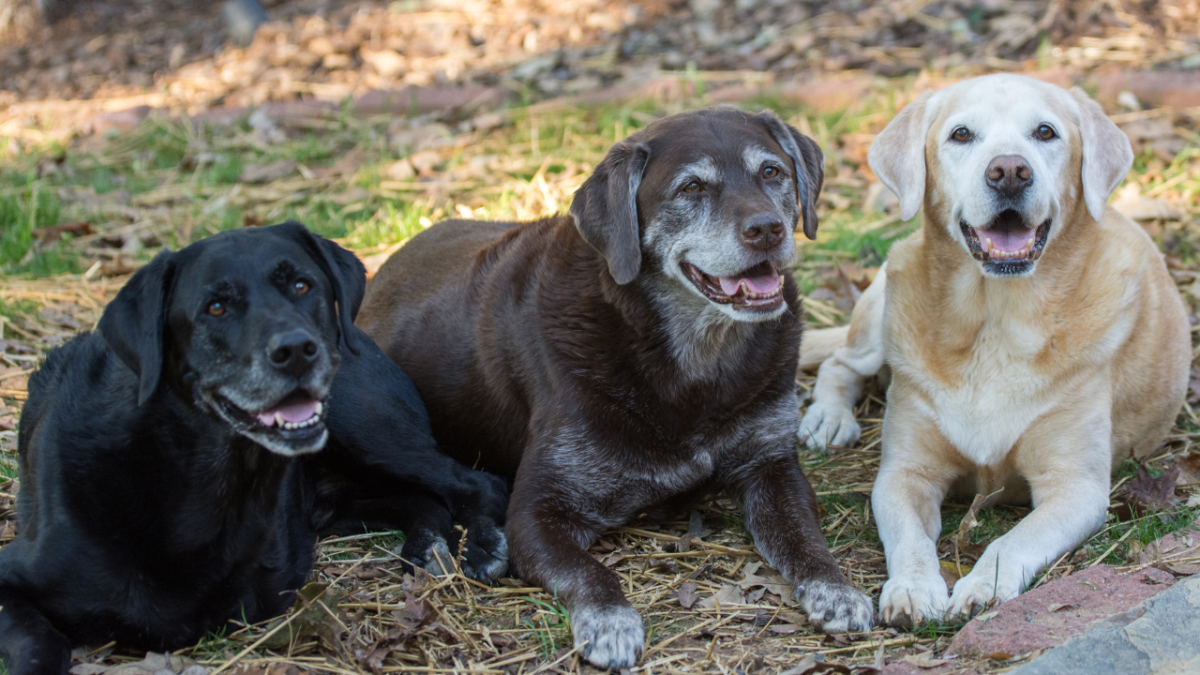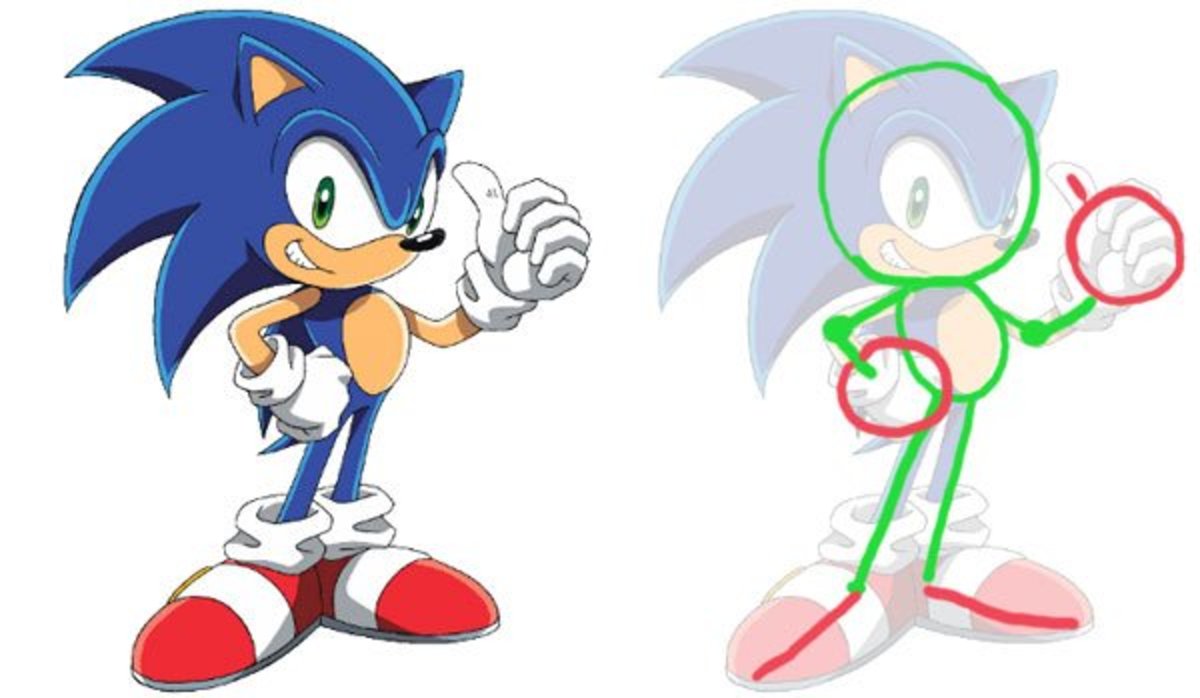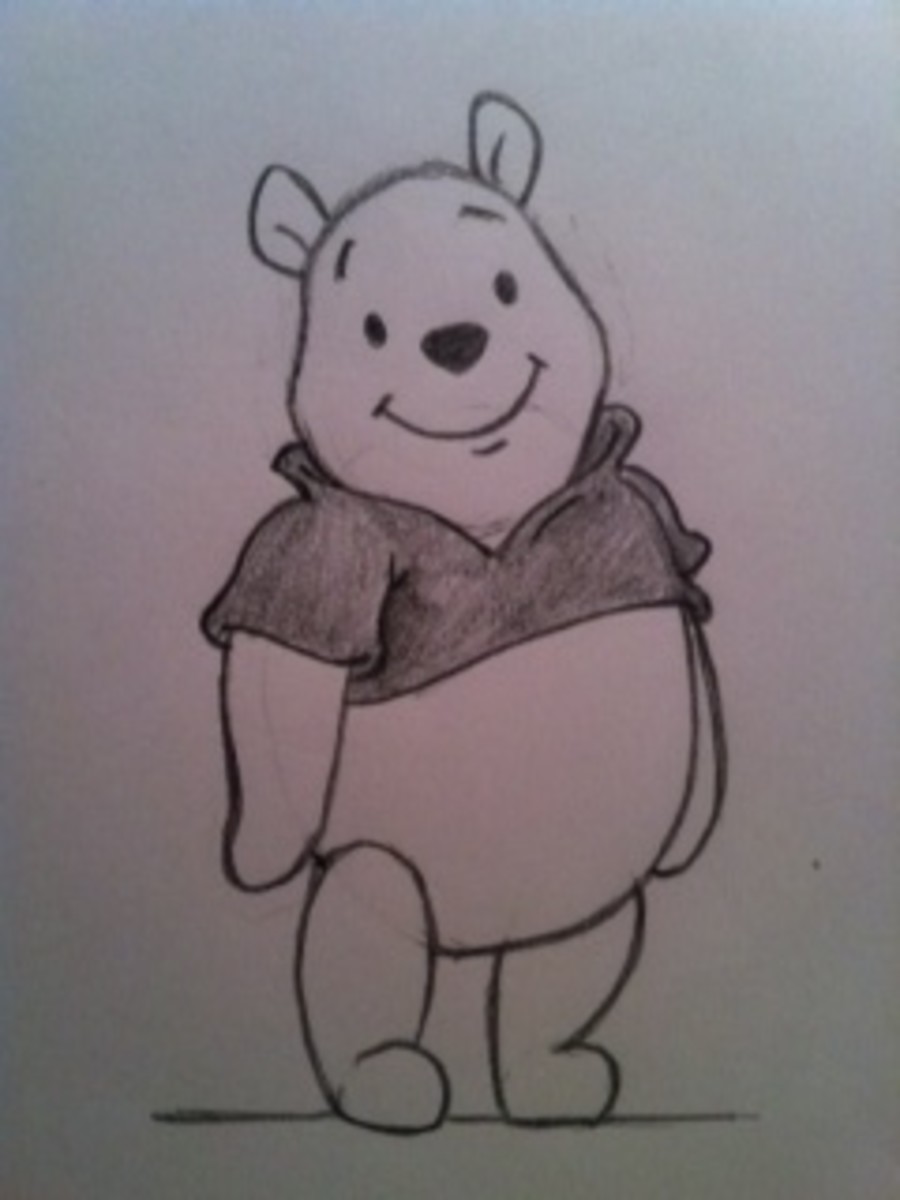Tips for Drawing and Painting Cats
Watercolor Tortie
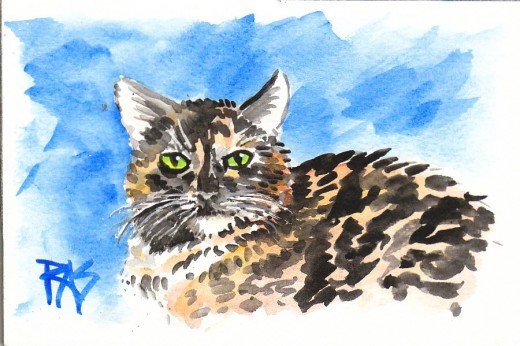
Watercolor Tortoiseshell Cat "Busy"
I painted A Little Busy from a photo reference posted by DupliKate when she hosted a Weekend Drawing Event challenge on http://www.wetcanvas.com -- every week someone new will host one for all media and post pictures of their area, some people, usually some florals and landscapes and at least one or two birds or animals included. They vary, it's the 16 best reference photos the host can come up with and sometimes they choose some out of the Reference Image Library. These challenges and the references shared only with WC members are among the great perks for joining WetCanvas, which I recommend for anyone who likes drawing or painting.
Busy is a tortie aka tortoiseshell cat. All tricolor cats, calico or tortoiseshell, are female. If you find a tricolor male, you are a millionaire if he can breed true, since the gene is sex-linked. I could also tell that Busy was a girl or "queen" by her proportions. Her feet are tiny and her face is rounded but she doesn't have the magnificent cheek fluffs and big jaw of a tom. Ari, my colorpoint medium long hair seal point cat, a Street Siamese, has glorious wide cheek fluffs almost like a fox or lynx. Some neutered males lose them, most don't, and his feet are the very wide big paws of a male cat.
Busy also has the commanding look of a queen. It's not a coincidence that female cats are called Queens. They are. They rule in cat society, the dominant cat in a mixed gender group is likely to be the most motherly female or matriarch. If the colony didn't just come together as friends, she's probably the mother and grandmother of half her brood. Cats live in family clans and outbreed by inviting interesting toms and queens to join the community, or adopting kittens... or mice, or rats, or horses, or humans, or anything that walks. Cats are very xenophilic as a species.
If they can train you to behave properly among cats and understand the pidgin body language and vocal signals they invented for your species, then they treat you as part of the clan and part of their personal family. A person who says "My cat runs my life" means it -- when he or she comes home from work, a small furry mother takes charge and can put everything right by washing away all their troubles with a raspy little tongue. Cats have wonderful social skills too. The cat who runs your life will also judge your acquaintances and visitors with startling accuracy, reading their intentions toward you (and her) by close observation.
Ari was the only cat in our house for some time after we moved in, he and I. Then one day my daughter Kitten came home from the grocery and got stopped by a tiny tortie waif with enormous green eyes meowing piteously at her who purred with a volume a bit like someone gunning a Harley as soon as she reached down to greet the little queen. Gemini's markings are different -- and Gemini took over immediately, dominating Ari and setting her place in Cat Central by sleeping on all his favorite spots, clawing the post, eating first every time I poured cat food and hissing at him if he was too forward.
Ari loves having other cats for company so he was every inch the proper feline gentleman. He purred and approached her appropriately and over a week or too convinced her he was a good gentle male and could be trusted. They're now very close friends and much happier together than apart. Gemini has plumped up from a bony tiny waif who we thought was a three month old kitten into a plump little matriarch who's a bit fat -- not quite Obese yet but if she keeps widening she'll get there and have to have her own diet. She was starving and I expect the deprivation is why she ate too much, she doesn't seem to be packing on the ounces as quickly now that she achieved a certain stage of plumpness.
Either that or she hit her balance point between loving the cat food and loving to run around and play, which she does. She got her name because her markings neatly split on a perfect straight line down the middle of her face, orange spots with black on the other side, black having orange on the other, countercharged here and there randomly. Busy didn't have that marking and her facial expression was different.
I was able to correct for the color of her coat though, because I painted this while Gemini was sleeping with her back turned on the back of my other armchair where Ari is sleeping now. It was bright day so Gemmi had her nose to the wall. I followed the photo reference for markings, pose and anatomy, and Gemini's real fur for color and texture.
The result came out as a great likeness. DupliKate commented on this painting that I'd captured the likeness perfectly. "That's my Busy! I just saw her looking right back out at me!"
Getting the likeness in a cat's face is like getting the likeness in a human face. Cat faces are just as expressive and just as unique. The basic proportions vary as much as human faces do -- but even big cats have the same facial structures and some of the same proportions, though usually their muzzles are longer and jaws much bigger naturally. Also in body proportions, a big cat is going to have thicker legs and bigger feet.
Patterns of hair flow are the same on almost all cats and very easily observed if you know to look for it. One way to do this is tactile.
Pet the cat.
If you go against the direction of the fur, the cat will hiss, swat, bite you, flatten his ears, look annoyed or grumble. If you go in the direction of the fur, the cat will purr, relax, move to put the spot he wants petted right under your hand and otherwise indicate pleasure. When the wind or a very small child or ignorant person pushes the hair up and backward, it will stand straight out and look puffy.
If it's a Persian, it's like that all the time and the cat looks a bit like a giant wad of cotton wool with a cat inside it somewhere. Wash that Persian and you'll find out the fur is wider than the cat in all directions, and woolly. Medium long hair is best for making the directions of hair flow visible in a photo reference, so those are in some ways the easiest cats to draw or paint. Short hairs it's not too bad. Puffy fluffy ones have their own challenges and if you use watercolor, then I would suggest softening all edges around the cat by brushing water out from them after it's dry.
This painting of Busy looks nice because every single stroke flows in the direction of her fur and flicks up off the paper in that direction. Hair clumps are often curved slightly, either curving around the animal's rounded bulk or flicking up if it's a fluffy bit.
If a short haired cat looks spiky and fluffy all over and is hissing, this is a bluff soon to be followed either by running away or an extremely concentrated full on Cat Fu attack with all the pointy bits. Lots of claws and teeth, liquid motion, perfect quick reflexes and each part of the cat can attack independent of all the rest as long as it's conscious. Cats are tough. If you ever tried to wash an unwilling one, you'll understand just how tough.
I established depth and roundness on Busy entirely by the patterns of strokes and fur markings because it was hard to see shadows and shading on her markings. I did a little shading but it was mostly very soft compared to her dramatic, unique markings. She has some white on her chin and mouth that has bluish depth shading -- but most of the sense of depth is carried with color -- a blue background to push her warm orange markings forward, cooler emphasis toward the back of her body and head and special attention to the warm orange and golden patches as I came forward and as I focused on the focal point, her commanding gaze.
This is a difficult trick. Solid colored cats are much easier! Practice with gray cats or smooth cats for a while. If you like big cats, lions and cougars are easiest because they don't have spots or stripes to keep track of and put in carefully to get the likeness -- every cat's markings are unique.
Notice the eyes have very black lids. Those contrast. Any tabby has spectacle markings too like Egyptian eye makeup and the stripes on the face and ear markings help to exaggerate the cat's facial expressions. If you look at an attractive Goth girl with that kind of eye makeup, you can see that her facial expressions are exaggerated in the same way -- your eyes are drawn to her eyes and you can see her eye expression easier. Cats don't use lipstick and their mouth expressions are sometimes subtler, but whiskers act the same way as the goth girl's lipstick to express mood.
An interesting point is that cats who love people and were raised by humans as kittens will learn to smile while they purr. They understand smiling is the human version of a purr. Some will even try to exaggerate the smile while purring at a new human so the human understands a purr is the same as a smile. Communication is very important to cats and they are as social as human beings -- in their own, very feline, way. Feral cats never smile in my experience, if cats raised them they don't need the gesture. But a smiling strange cat is going to be more likely to walk into a scritch if you hold your hand down and waggle your fingers for a greeting.
Drawing Cats From Life -- Cat Gestures
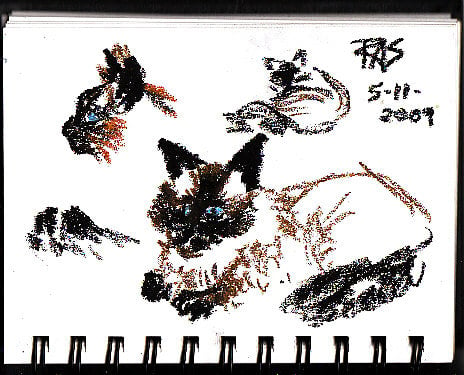
Drawing Cats From Life
Cats don't pose very long. They will sometimes take a prankish delight in holding a position for fifteen minutes and move as soon as you pick up a sketchbook. Pick up your camera for the perfect cat pose and by the time you click, you get a beige blur.
The solution is to practice by doing gesture drawing. Try to draw the cat in under five minutes. Try to draw the cat in under three minutes. Try to draw the cat in under a minute. Basically, try to get the gist of the cat's position and shape while the cat is still in that pose.
Forget the details. You can add them in later, especially if you got a nonflash photo in a similar pose sometime and it wasn't blurred. Take enough hundreds of kitty pictures and you will get some good references. Or do a video -- some of the stills will be unblurry perfect references. But if you want to draw your cat from life, just observe the cat for a long time and then grab something bold like oil pastels or charcoal and draw as fast as you possibly can.
Don't worry about mistakes, just draw right over them. The profile on the left has one ear position in brown and another in black over it fixing it, because I misplaced his ears on the first go when he moved them. Ear gestures are very important to a cat's mood. The ears can swivel around like radar dishes to distinguish the slightest sound -- a mouse in the wall upstairs will attract that cat's attention downstairs while the TV is going -- and the cat will know what room it's in. They're hunters of small prey. They love insect noices and scurrying mouse feet and bird wings fluttering, the noises that mean something they hunt can be pinpointed for where it is.
They also hear your breathing and your heartbeat. They can tell if you're sick and come cuddle up to you to comfort you, or if you're not sick but just sad and do the same. They're constantly paying attention to you because you're important to them -- a person as much as any other cat would be in their eyes. So one ear is usually cocked in your direction even if the cat's asleep.
You might pour cat food, after all.
Gemini can hear the rattling food bag when she's upstairs and come racing down to get to the bowl ahead of Ari. When I want to know where he is and he's not in sight, I feed her and he will meander along for his share in a few minutes. He was never so crazy about food that he'd run anytime I filled the bowl, from six weeks old he always trusted me to keep it full and only bugs me about it if he's emptied the bowl while I'm asleep -- then he'll wake me up and get very affectionate to remind me to get up, notice the bowl is empty and feed him.
So what the ears are doing in any cat portrait can be realistic or not. You don't want angry flat ears on a sweet eye expression to give a confusing expression to a cat lover who knows what Airplane Ears mean (blood). Alert ears pointed forward at the viewer of the painting gives the viewer the cat's undivided attention, like Busy's in the watercolor portrait.
Gesture sketches will sometimes turn out bad, other times be striking and beautiful. The little upper right one is one of the best drawings of Ari that I've ever done and one of the simplest. The more often I draw him from life, the more often I get those moments of finite perfection.
They are references too, as much as the photos.
I will eventually by sketching him in gestures long enough be able to sketch him in motion -- then use references of him sitting still combined with the gesture sketches and video stills to draw and paint him realistically in motion. The more often you practice gesture sketching your cat, without minding the ones that look bad, the more good ones you get -- and the more your unconscious becomes familiar with cat anatomy and gets them right!
Cat bodies are very long, though not as long as weasels, they are longer than dog bodies in proportion to their legs. Cat legs are remarkably short unless they're cheetahs, which have greyhound proportions and look like a cross between cats and greyhounds. Feet are round, soft and flat on the ground. Wrists are dainty and the cat's paw can dangle from the wrist either as a relaxed pre-swat gesture or an elegant expression of emotion.
Tail gestures are very important too. The swish flop of a tail usually means "let's play" and is very careless compared to the slow stalking-cat tip-flicks that are probably signals to other cats to help hunt -- sometimes they hunt in pairs or groups. Fluffed up tails are a sign of extreme anger or bouncy high energy. If the tail goes straight up, folds over a little after it leaves the body to dangle down loose, the "baboon tail" gesture means "I'm going to bang all over like I've got rocket fuel in my veins and wreck the house! Time to play rowdy and race around up and down!"
Someday I'll be able to do a little Dr. Doolittle booklet of ear and tail gestures in cats, of feline body language and sounds. Their voices sometimes sound like birds. I think they evolved that in order to catch birds by calling them, or not alarm them when they are calling each other. Ari has a high sweet kittenish voice for being such a big macho cat at 14 lb with the giant lynx paws with snowshoe tufts. He's hefty and very masculine -- and has a high sweet pretty voice that probably sounds perfectly masculine to them.
Norwegian Forest Cat -- watercolor
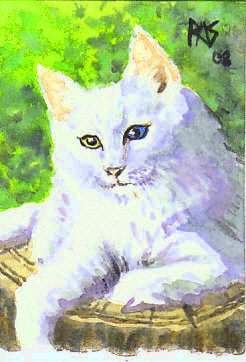
Painting a White Cat (Or Black One)
If you really like painting cats, make friends with cat photographers and get permission to work from their images. Professional cat photographers have a thousand tricks to get the cat to do good poses and fast shutter speeds to capture them when they don't. Fredrik Loevik and I have been friends for some years. This was actually painted from a studio photo on a peach colored cat tree.
I changed the shelf he was on into the stump of a tree and set Astonish in the forest since he's a forest cat and they're good hunters and mousers. They're big cats. Males can be 35 lb just like a Maine Coon -- they are gentle giants too with long silky coats. You can see the graceful long cheek fluffs this odd-eyed white cat has.
I implied the shapes of highlighted white clumps of fur by using strokes of ultramarine blue for the shadows. To paint a white cat, reserve only the highlights and shade the fur with blue. Then look close at all the colors of the fur. Use a hole-punch on a piece of white card and put it over different parts of the fur to mix your color mixes.
This cat had a lot of pink fur from reflected light from the peach colored shag carpet of the cat tree. So I changed all the peach color reflected light to green so the bright summer foliage is what he'd reflect, and that settled him firmly into the new setting I created. Don't be afraid to go quite dark in the shadows -- sometimes clumps of fur separate with distinct deep shadows and it will still read as white when those are true darks. It'll wash out and look like an underexposed photo if you don't get them dark enough.
On a black cat, the reverse is true. Use cool blues and blue-grays for most of the cat and only go all the way to black in the deepest darks. Watch for highlights if a black cat's coat is glossy -- they may be surprisingly light. Place them correctly and get the direction of the fur strokes accurate and it'll read as a black cat even if it's a very glossy short haired black cat! Blue highlights are what comic book artists use for black things like Batman's cape -- and it works just fine on black cats too.
Again, use the hole punched bit of card to check the value and hue of different areas of highlight and shadow. That'll give you plenty of surprises, but accurate values make for true color on any cat or other animal. White cats and black ones are the toughest to draw or paint -- until you get that about the highlights and shadows.
After that, any white or black patch on a tabby or tricolor is easy, just treat that bit like it belonged to a white cat or black cat. Compare this Norwegian Forest Cat's mouth to Busy's mouth.
If you are using acrylics or oils to paint the cat, then you can put white highlights on after having gotten them too dark and it's really convenient. With watercolor it's good to sometimes reserve them with masking fluid, especially whiskers if you can get the masking fluid to go fine enough. I did some of Busy's whiskers with masking fluid applied with a toothpick, one dip per whisker, others I painted thick ones thinner by going around them, then at th every last I added a few more with Chinese white.
Fill In From Memory When The Cat Moves
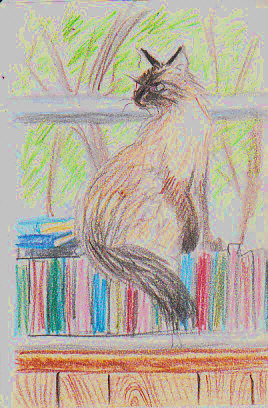
Combine Observation, Memory and Imagination
This life sketch of Ari in colored pencils is something a bit more developed than a gesture. I did most of the books and wood panels and window shading after he moved. I got his profile in with that pose, looking at the other window when a bird flapped into it. Then he lost interest when it flew away and turned his back to look out this window.
I filled in the general shape of his body from memory of the earlier pose but got the flow of his hair from watching him in the other pose. He started washing himself. I did his markings by watching his head bob up and down and paid attention waiting for him to look in that direction again before doing his eye.
Finally after I had him as good as I could get, I sketched in the rest of the scene and moved his tail down to flop over the books the way it had at first, even though I hadn't drawn his tail in and by then it was tucked up under him and he was headed for brick position to meditate.
This is what cat gesture sketching is good for -- being able to see the gist of a pose faster than you can draw it and hang onto it long enough to get it in, then do the details from a different pose. It's not my best but by no means as bad as some gestures have gotten. I used somewhat hard colored pencils and had light tones that didn't show up well in the scan, so I had to darken the scan to let the light areas show -- it's actually on white paper, not grey. It looks a bit better with more soft shading in real life, this was one that didn't scan well.
I got his Keen Hunter expression just right though -- he whipped his head around so fast I thought he was going to fly from one windowsill to the other.
Black cats and dark cats and seal point or dark point Siamese will sometimes have patches of white skin showing where the fur gets very thin between their ears and their eyebrows. Get this marking accurate and you have some good realism. Don't fill that in solidly with thick black fur unless the actual cat has thick fur there -- some do, but the white skin showing is very striking and you'll lose the likeness in a portrait if you correct it.
Sometimes, You Luck
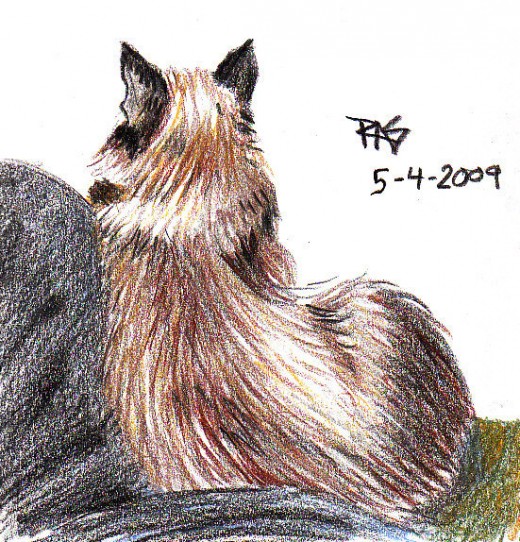
Sometimes They Do Sit Still -- Go For It!
When I started this colored pencils sketch of Ari, he was sitting curled up in a very relaxed way half on my leg and half on the arm of my squashy armchair, which is a slightly olive cast gold color. He settled down and looked out the door of my room where he could see something on TV -- I think the kids were watching Meerkat Manor. He was purring, enjoying our intimacy, and his weight doubled on my leg as he completely relaxed.
I knew I had a great opportunity to get a good gesture of the graceful shape of his body in a relaxed pose, so I reached for my small sketchbook and some pencils that were sitting open next to me and didn't rattle. I got in his ears and general shape in about three strokes and he still didn't move. I loved it. I had the shape. From there I started following his fur textures -- first with accent strokes in black, then switched to various earth tones to capture the rich variations of value and hue in his silky coat.
Ari still didn't move.
I could detail his hair and markings and did. I spent a good twenty minutes on this and even sketched in my leg and a bit of my t-shirt that had flopped over part of his back, and the chair. He didn't move even after I was done... he stayed and relaxed and continued purring.
When your cat does sit still for any length of time, don't miss the opportunity. Dozens and hundreds of cat gestures will prepare you to get the essentials quickly, but once you've got that, start adding more fur-direction strokes working from the darkest areas to the lightest. For a fur-stroke, use a sharp point. Press down firmly and then lift away as you move the pencil in the direction of the fur. I usually use fur-strokes even in gestures where I can, to break up the outline and get more realism.
When observing, look for breaks between clumps of fur. Draw the shadow between two clumps, feathering it out lighter as it comes up into the light on the back of the next clump. Practice that. Practice it with unliving pieces of fur too if you have something like a rabbit skin coat you can wrap around a chair arm to draw too. Look at where the fur puffs when the skin bends around an underlying structure like the cat's hip.
Fur is directional, it's almost always directional. I may someday do a cat anatomy diagram of the fur but I'd have to do it in several poses. For now I just observe it whenever my cat holds still long enough to let me and whenever I have a good photo reference of a cat. The more often you do quick cat gestures, the more likely a sweet moment like this won't be lost and you'll get it purrfect.
I titled it "My Cat Has Black Ears" because that was the first thing I ever knew about him. I loved my friend Katy's cat Snow, a lynx (tabby) point longhair who was gorgeous, tiny and elegant. Snow liked me too. When Snow got pregnant from "a big black cat," Katy had moved out of state -- but her dad was planning to visit her for the 4th of July and he was a friend too.
She picked out my kitten from the litter right around when they were born and started tempting me with photos of one week old Siamese and three week old Siamese in emails. "I know you wanted an older shelter rescue but this is what your kitten looked like when he was one week old. Except your cat has black ears."
They had barely bluish ears in the photo. Black ears that young???
He did.
When he arrived he was smaller than my hand, his paws tinier than the tip of my little finger. He was about 3/4 fur because it was as long as it is today with much less cat under it. He weighed ounces. He seemed to weigh nothing. He did purr. He had tiny pale blue eyes. I petted his cheek fluffs back from his face and realized his head was no wider than my thumb. He did have black ears -- little striking stark black ear tufts coming up out of then pure white head fur. He had a tiny black mask on top of a wider striped one that later mostly darkened, but I can still see a few stripes in the brown part.
His full name is Aristophenes Mr. Robert's Cat Sloan ,and I love hm. After all these years, I can finally get his likeness and will do many more portraits of him in future.
#16 of 100!!




